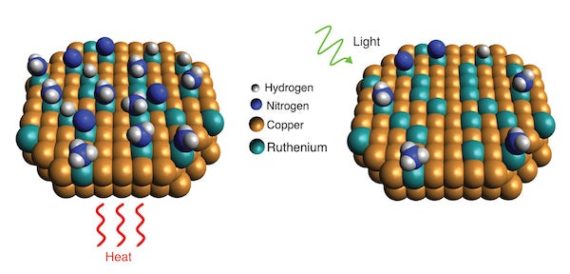Hydrogen continues on its course of always being five to ten years away as a cheap, viable storage mechanism for energy. The ideal of driving a car that emits only water vapor (or flying an airplane that zooms about on a few pounds of H2) seems like an ever-distant dream. Tina Casey, writing for Gas2.com reports on Rice University solution using stinky ammonia that might clear the air for hydrogen, though. She explains that the October 8th celebration of the fourth annual Hydrogen and Fuel Cell Day was great for natural gas stakeholders, since the gas is the primary source today for hydrogen. Her headline indicates this could become a leading way to store and extract H2: “Forget the Hydrogen Economy, Here Comes the Ammonia Economy.” So Desirable. So Hard to Get. Casey explains the big drawbacks to this market – fugitive greenhouse gas emissions and natural gas’s non-sustainable nature. Another factor, the often high cost of producing H2, adds to …
A Billion-Hole Battery
Battery companies and academic researchers keep finding ways to make ions flow quickly and efficiently within batteries. One way is to reduce the size of a cell so that the ions don’t have to travel far. University of Maryland researchers may have achieved a miniaturization that boggles the mind. Their claim, that they’ve created a “single tiny structure that includes all the components of a battery that they say could bring about the ultimate miniaturization of energy storage components, comes from a story by Martha Heil in UMD Right Now. The structure is based on a nanopore, an incredibly tiny hole in a ceramic sheet 80,000 times thinner than a human hair. The holes can hold electrolyte that carries a charge between the top and bottom surfaces of the ceramic sheet. Millions of these holes poked through a postage stamp-sized sheet comprise a battery. Researchers think the uniformity of the holes allows them to be packed tightly and efficiently together. …
Ohio State’s Solar-Air Potassium Battery
Ohio State University researchers have come up with a two-in-one solar cell/battery combination that promises great efficiency and low costs. What’s not to like? Unfortunately for readers of the blog, it’s initially only a stationary system that will make energy storage a viable circumstance for large power plants, but it seems that the technology could be adapted to lighter, portable applications, such as electric vehicles. Ohio State is keeping somewhat mum about the patent-pending device, which they are developing as a commercial entity under the auspices of their spin-off, Kair (K for potassium, plus air and pronounced “care”). We’ve heard a great deal about upcoming lithium-air batteries, but potassium-air is unique. Even more unique, this battery stores energy from its own solar cell, the world’s first solar battery. A mesh solar panel allows air to enter the battery, and a special process transfers “electrons between the solar panel and the battery electrode. Inside the device, light and oxygen enable different …

